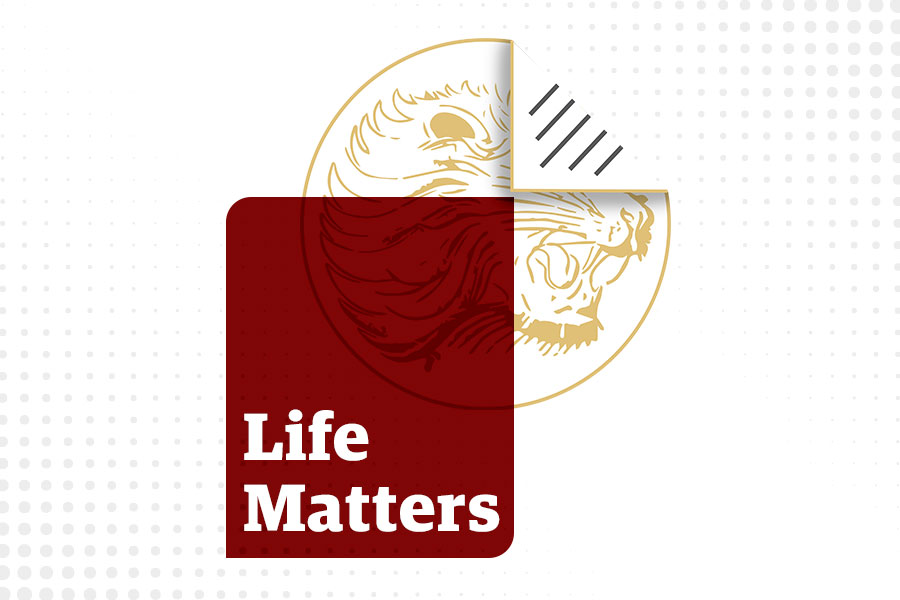
Life Matters | Sep 27,2020
May 8 , 2021
By Carolyn Kissane
When Ferruccio Lamborghini, a wealthy farmer, met Enzo Ferrari, he commented on the cars' heavy clutch. Ferarri then told the farmer that a man as common as him would know nothing about cars and their manufacturing process. In an act of defiance, Lamborghini established his own company that today clearly displays the rivalry between the two super and hyper automakers.
Such rivalries are not limited to the car industry. They are not even limited to companies within an industry but between industries as well. Nowhere is this more glaring than the media today.
Up until a decade and a half ago, we all were used to what is known as legacy media. They are as top-down as they come. A few prominent individuals at the highest echelons of society have the capital to establish media houses, and then go on to hire editors and reporters over which they have undue influence. The subjectivity of these media houses was evident.
This was not just true in Ethiopia but in countries such as the United States. Take the candidacy and the presidency of Donald Trump. Media outlets such as Fox Newswere slobbering over every act of the president while the likes of CNNand MSNBCcriticised nearly all of his policies and decisions all throughout his presidency.
The media was polarised on either side reporting angles that reflected the media outlets' outlook instead of allowing audiences to formulate their own opinions. This problem is significantly worse in Ethiopia, where journalism as a profession is new to begin with.
Often times during interviews, I have been grilled in attempts to reveal where I stand on political and socioeconomic issues. However, this should not matter as a journalist. I am supposed to leave my personal feelings aside and report facts neutrally.
Worse still, I have also seen friends with a great talent for storytelling be denied access to employment because their production style did not fit with the media’s perspective on issues.
But thanks to the 21st century and the digital revolution, these media outlets are getting their comeuppance. Many of the talented youth I know personally that have been rejected because their perceived narrative was not acceptable have now found a more open platform and a more profitable method than partnering with interfering and censoring authorities.
YouTube may only be a teenager of 16 years but it is already a household name. Despite being known as a place for people to watch news, pranks, music videos, reviews and tutorials, it is also a platform that is giving many full-time jobs.
There are over two billion users on the platform with over six million of these from Ethiopia, according to datareportal.com. Like any online platform, users mean more "eyeballs," which translate into money. And users only keep coming back if there are new and interesting things to see. As an incentive to gain content and users, YouTube has also launched a partnership programme that allows content creators to place ads in their videos.
Based on the number of views the ads get, the partner will get a percentage of the ad revenue - that is a huge incentive to make videos and make them so they are likely to be viewed by many.
Many of the producers I know that are now content creators on YouTube decided to try the platform after being rejected by a legacy media outlet. Their content was deemed either inappropriate or unimportant. Some of these legacy media rejects nonetheless have found a new lease of life on YouTube. They could reach upwards of 200,000 views in the first few days of release, netting between 1,000 dollars to four times that a month. Not bad I would say.
We can either run with progress or be run by it. This is true now more than ever for the transformation taking place within the media. People choose online content over fixed-time programmes. They can pause, skip or forward at any time. It offers optimal convenience. On the other hand, it would take massive brand loyalty to stick with a show that could only be accessed at a specific time of the week and is sparsed out by so many ads as to be frustrating.
Legacy media outlets should put their ego aside and run with the progress instead of wanting to form the type of programming that fits into their narrative of society. At least, it would help them stay relevant. After all it is not the logo that people come to see. It is the people and their creative direction that keeps the audience coming back.
This is not to say that the unfettered freedom and the algorithms employed by social media platforms are free of shortcomings. The problem of bias is perhaps more problematic in digital media. But this is compensated by the diversity of content that is offered, leaving the choice of picking winners and losers, by and large, to media consumers instead of a few powerful people at the top.
PUBLISHED ON
May 08,2021 [ VOL
22 , NO
1097]


Life Matters | Sep 27,2020

Commentaries | Feb 17,2024

Radar | Aug 31,2019

Radar | Jan 12,2019

Fortune News | Nov 27,2018

Fortune News | Jul 27,2025

Commentaries | Aug 31,2019

View From Arada | Apr 26,2025

Fortune News | Sep 09,2023

Life Matters | Feb 11,2023

Photo Gallery | 180563 Views | May 06,2019

Photo Gallery | 170757 Views | Apr 26,2019

Photo Gallery | 161835 Views | Oct 06,2021

My Opinion | 137293 Views | Aug 14,2021

Dec 22 , 2024 . By TIZITA SHEWAFERAW
Charged with transforming colossal state-owned enterprises into modern and competitiv...

Aug 18 , 2024 . By AKSAH ITALO
Although predictable Yonas Zerihun's job in the ride-hailing service is not immune to...

Jul 28 , 2024 . By TIZITA SHEWAFERAW
Unhabitual, perhaps too many, Samuel Gebreyohannes, 38, used to occasionally enjoy a couple of beers at breakfast. However, he recently swit...

Jul 13 , 2024 . By AKSAH ITALO
Investors who rely on tractors, trucks, and field vehicles for commuting, transporting commodities, and f...

Nov 1 , 2025
The National Bank of Ethiopia (NBE) issued a statement two weeks ago that appeared to...

Oct 25 , 2025
The regulatory machinery is on overdrive. In only two years, no fewer than 35 new pro...

Oct 18 , 2025
The political establishment, notably the ruling party and its top brass, has become p...

Oct 11 , 2025
Ladislas Farago, a roving Associated Press (AP) correspondent, arrived in Ethiopia in...

Nov 2 , 2025
The National Bank of Ethiopia (NBE) has scrapped the credit-growth ceiling that had s...

Nov 2 , 2025 . By SURAFEL MULUGETA
The burgeoning data mining industry is struggling with mounting concerns following th...

Nov 2 , 2025 . By YITBAREK GETACHEW
Berhan Bank has chosen a different route in its pursuit of a new headquarters, opting for a transitional building instea...

Nov 2 , 2025 . By BEZAWIT HULUAGER
Nib International Bank S.C. has found itself at the epicentre of a severe governance...